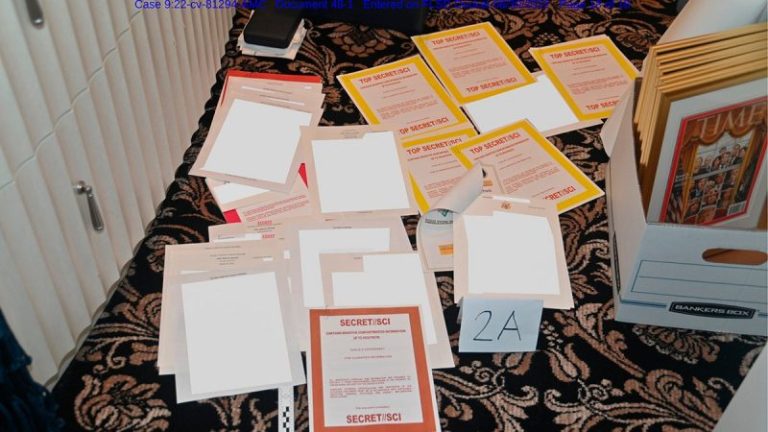VANCOUVER, BC / ACCESS Newswire / December 24, 2025 / Goldgroup Mining Inc. (‘Goldgroup‘ or the ‘Company‘) (TSX-V:GGA)(OTC:GGAZF).
Further to the Company’s news release dated September 18, 2025, Goldgroup is pleased to announce that, subject to the final approval of the TSX Venture Exchange (the ‘TSXV‘), it has acquired all of the issued and outstanding Series ‘A’ shares in the fixed capital and all the issued and outstanding Series ‘B’ shares in the variable capital (collectively the ‘Molimentales Shares‘) of Molimentales del Noroeste, S.A. de C.V. (‘Molimentales‘) through a Concurso Mercantil process (restructuring proceeding equivalent to Chapter 11 in the United States). Goldgroup has received approval from the Second District Court for Commercial Bankruptcy Matters (the ‘MexicanCourt‘) to the plan of arrangement (the ‘Plan of Arrangement‘) the Company filed with the Mexican Court under the Concurso Mercantil process. The judgement issued by the Mexican Court in favour of Goldgroup’s Plan of Arrangement completes the bankruptcy and restructuring of Molimentales. Molimentales’ primary asset is the formerly producing San Francisco Mine concessions, located in Sonora State, Mexico. The acquisition of Molimentales is an Arm’s Length Transaction and there are no finder’s fees payable.
‘This transaction marks a truly transformational milestone for Goldgroup,’ said Ralph Shearing, CEO of Goldgroup Mining. ‘The San Francisco Mine, located 44 km in a straight line from our Cerro Prieto Gold Mine in Sonora, represents a unique opportunity to consolidate a highly prospective gold district. Its most recent historic NI 43-101 technical report (dated August 8, 2020 prepared by Micon International Limited) outlines 1.4 million ounces of gold* in measured and indicated resources within 99,700,000 Tonnes at 0.446 g/t** calculated at gold price of $1,500/oz, providing a strong foundation for renewed development.
Over the coming months, we will launch an aggressive drilling campaign aimed at confirming and upgrading these resources, while also testing for additional mineralization both within and beyond the current open-pit footprint. Our goal is to unlock the full potential of this asset and advance a robust, long-term mine plan that can reshape the future of Goldgroup.
In management’s opinion, San Francisco represents one of the lowest capital costs, near term potential gold production projects available in today’s junior mining space.‘
* Historic 43-101 Technical report prepared by Micon International Limited authored by the following qualified persons; Willian J Lewis, P.Geo, Richard M. Gowans, P.Eng., Rodrigo Calles-Montijo, CPG, Nigrl Fung, B.Sc.H, B.Eng., P.Eng., Cristopher Jacobs, CEng, MIMMM and Ing. Alan San Martin, MAusIMM(CP) quoting measure and indicated resources of 99,700,000 Tonnes grading 0.446 g/t Au plus 11,374,000 inferred resources grading 0.467 g/t Au. Quoted historical resources were estimated following Canadian Institute of Mining, Metallurgy and Petroleum, as the CIM Definition Standards on Mineral Resources and Mineral Reserves. Subsequent production data confirm that the August 8, 2020 historical resource estimate has been depleted by approximately 119,589 ounces of gold through subsequent mining. (Molimentales historic production records subsequent to Aug 28, 2020, the date of the historic technical report.)
** Mineral resources that are not mineral reserves do not have demonstrated economic viability. A qualified person has not done sufficient work to classify the historical estimate as current mineral resources and the Company is not treating the historical estimate as current mineral resource.
Goldgroup filed a proposal under the Concurso Mercantil process to acquire Molimentales under the Plan of Arrangement with the liquidator (the ‘Liquidator‘) appointed by the Mexican Court to oversee Molimentales’ bankruptcy proceedings. The Plan of Arrangement was approved by over 50% of the recognized creditors of Molimentales as required under Mexican law, recommended by the Liquidator and subsequently filed with the Mexican Court for approval. The Mexican Court approved the Plan of Arrangement by judgement issued effective December 23rd, 2025. The acquisition of Molimentales will be subject to the Issuer satisfying all the conditions of the Concurso, including paying all creditors under the Plan of Arrangement, all outstanding taxes and concession fees due to the Mexican government, as well as receiving final approval from the TSXV. With the Plan of Arrangement and together with the settlement of outstanding liabilities owed to the Mexican Government in order to maintain the San Francisco Mine in good standing, transfer of ownership of Molimentales and the San Francisco Mine and its associated assets, including mining concessions, processing plants, and all related infrastructure, to Goldgroup, will occur free and clear of all liens and liabilities.
Prior to the filing of the Plan of Arrangement, Goldgroup acquired 60.24% of the debts owed to certain major creditors (the ‘Major Creditors‘) as recognized by the Mexican Court for US$8,523,216 of which US$7,496,092 has been paid to date and the balance of US$1,027,124 will be paid to complete the acquisition. Under the terms of the Plan of Arrangement Goldgroup has agreed to pay US$2,566,098 in three equal installments in December 2026, 2027 and 2028 to the remaining creditors holding 39.76% of the recognized debt in addition to all outstanding mining concession fees (including penalties and interest), taxes, fees owed to the National Water Commission, supplier debts and certain expenses related to the Concurso proceedings currently estimated at MX$170M (approximately US$9.3M). Some of the payments described above are facilitated through the Company acquiring the Molimentales Shares by paying the owners of the Molimentales Shares MX$100,000 and capitalizing Molimentales with MX$99.9M for a total of MX$100M.
About the San Francisco Mine
The San Francisco Mine, historically one of the significant gold producers in Sonora, Mexico, has substantial existing infrastructure and potential for future exploration, development, expansion and production. Securing control of this asset is aligned with Goldgroup’s vision of becoming a leading Mexican-focused mining company with operational expertise and a strong commitment to responsible mining practices.
The San Francisco Mine is a large-scale, formerly producing open pit gold mine. The San Francisco Project encompasses 13 concessions totaling 33,667 hectares plus 13,284 hectares of regional concessions in the north central portion of the state of Sonora, Mexico, approximately 150 kilometers north of the state capital, Hermosillo.
The operation is comprised of two previously producing open pits (San Francisco and La Chicharra), together with heap leach processing facilities and associated infrastructure located close to the San Francisco pit.
With excellent infrastructure already in place and producing as recently as 2022, this acquisition represents an opportunity for a near-term, low-cost gold production restart, expected to more than triple Goldgroup’s current production capacity towards plus 60,000 gold ounces annually.
A decision to re-start operations will be made quickly after completing confirmation and expansion drilling. Plans are in place to conduct a drilling campaign over the next few months to confirm and upgrade existing resources and, outline potential additional resources within and outside of the existing open pit which will allow for the development of a new mine plan.
Highlights
-
Opportunity to restart production, optimize operations and expand resources through development and exploration drilling.
-
Historical large volume open pit mining of disseminated gold was carried out from 2010 through to 2022 producing approximately 1.3 million oz gold.
-
Potential resource expansion through development drilling within and, adjacent to, the current open pits, as well as multiple additional exploration targets.
-
More recent historic drilling has discovered multiple strongly mineralized structures behind and below the current pit walls.
-
Situated in a belt of metamorphic rocks that host numerous gold occurrences along the trace of the Mojave-Sonora Megashear, which trends southeast from south-central California into Sonora.
-
Historic metallurgy recoveries between 67% to 72% (Molimentales historic production records during previous 10 years of operation subsequent to mine closure in Nov 2022).
Processing throughput capacity of up to 22,000 tpd (Micon August 28, 2020 historic 43-101 technical report) is in place on site (utilizing two existing and parallel crushing circuits 15 ktpd + 7 ktpd). Existing infrastructure includes grid power, onsite wells, ROM and crushed‑ore pads, twin ADR plants, assay lab, workshops, haul roads all next to major highway.
Mineralization at the San Francisco Project is predominantly gold with trace to small amounts of other metallic minerals. The gold occurs in granitic gneiss and the deposit contains principally free gold and occasionally electrum.
The San Francisco deposits are roughly tabular with multiple phases of gold mineralization. The deposits strike 60º to 65º west, dip to the northeast, range in thickness from 4 to 50 m, extend over 1,500 m along strike and are open ended. Another deposit, the La Chicharra zone, was mined by the former owner as a separate pit.
The most recent resource estimate from a historic NI 43-101 technical report prepared by Micon International Limited dated August 8, 2020, estimated 1,430 Koz Au M&I @ 0.446 g/t (Measured 34,675 KTonnes containing 515K oz Au at 0.46 g/t and Indicated 65,025 Ktonnes containing 914K oz at 0.45 g/t.) Production records show that the Aug 8, 2020 quoted historical resources has been depleted with mining by approximately -119,589 Au ounces. The Company is not treating the information from the Micon report as a current resource for the Company. Although the Company believes such information to be relevant and reliable, the Company is treating the information as historical.
Mineral resources that are not mineral reserves do not have demonstrated economic viability. A qualified person has not done sufficient work to classify the historical estimate as current mineral resources and the Company is not treating the historical estimate as current mineral resource.
Cautionary Statement
The completion of the Plan of Arrangement and proposed acquisition of Molimentales is subject to the approval of the TSX Venture Exchange.
Ralph Shearing, PGeol. (Alberta) a qualified person under NI 43-101 and, CEO of the Company, has reviewed and approved the technical disclosure contained in this news release.
About Goldgroup
Goldgroup is a Canadian-based mining Company with three high-growth gold assets in Mexico. In addition to the San Francisco gold mine, the Company has a 100% interest in the producing Cerro Prieto heap-leach gold mine located in the State of Sonora. An optimization and exploration program is underway at Cerro Prieto to significantly increase existing production and resources.
The Company also holds a 100% interest in the Pinos underground gold development project in Zacatecas State.
Goldgroup is led by a team of highly successful and seasoned individuals with extensive expertise in mine development, corporate finance, and exploration in Mexico.
For further information on Goldgroup, please visit www.goldgroupmining.com
On behalf of the Board of Directors
‘Ralph Shearing’
Ralph Shearing, CEO
For more information:
+1 (604) 306-6867
410 – 1111 Melville St.
Vancouver, BC, V6E 3V6
www.goldgroupmining.com
ir@goldgroupmining.com
Neither the TSX Venture Exchange nor its Regulation Services Provider (as that term is defined in the policies of the TSX Venture Exchange) accepts responsibility for the adequacy or accuracy of this press release.
CAUTIONARY NOTES REGARDING FORWARD-LOOKING INFORMATION
Certain information contained in this news release, including any information relating to future financial or operating performance, may be considered ‘forward-looking information’ (within the meaning of applicable Canadian securities law) and ‘forward-looking statements’ (within the meaning of the United States Private Securities Litigation Reform Act of 1995). These statements relate to analyses and other information that are based on forecasts of future results, estimates of amounts not yet determinable and assumptions of management. Actual results could differ materially from the conclusions, forecasts and projections contained in such forward-looking information.
These forward-looking statements reflect Goldgroup’s current internal projections, expectations or beliefs and are based on information currently available to Goldgroup. In some cases forward-looking information can be identified by terminology such as ‘may’, ‘will’, ‘should’, ‘expect’, ‘intend’, ‘plan’, ‘anticipate’, ‘believe’, ‘estimate’, ‘projects’, ‘potential’, ‘scheduled’, ‘forecast’, ‘budget’ or the negative of those terms or other comparable terminology. Such forward-looking statements involve known and unknown risks, uncertainties and other factors which may cause actual results, performance or achievements to be materially different from any future results, performance or achievements expressed or implied by the forward-looking statements.
Forward-looking information is subject to a variety of known and unknown risks, uncertainties and other factors that could cause actual events or results to materially differ from those reflected in the forward-looking information, and are developed based on assumptions about such risks, uncertainties and other factors including, without limitation: receipt of all required TSXV, regulatory and other interested party approvals in connection with the Concurso Mercantilprocess; uncertainties related to actual capital costs operating costs and expenditures; production schedules and economic returns from Goldgroup’s projects; timing to integrate acquisitions (San Francisco Mine) and timing to complete additional exploration and technical reports; uncertainties associated with development activities; uncertainties inherent in the estimation of mineral resources and precious metal recoveries; uncertainties related to current global economic conditions; fluctuations in precious and base metal prices; uncertainties related to the availability of future financing; potential difficulties with joint venture partners; risks that Goldgroup’s title to its property could be challenged; political and country risk; risks associated with Goldgroup being subject to government regulation; risks associated with surface rights; environmental risks; Goldgroup’s need to attract and retain qualified personnel; risks associated with potential conflicts of interest; Goldgroup’s lack of experience in overseeing the construction of a mining project; risks related to the integration of businesses and assets acquired by Goldgroup; uncertainties related to the competitiveness of the mining industry; risk associated with theft; risk of water shortages and risks associated with competition for water; uninsured risks and inadequate insurance coverage; risks associated with potential legal proceedings; risks associated with community relations; outside contractor risks; risks related to archaeological sites; foreign currency risks; risks associated with security and human rights; and risks related to the need for reclamation activities on Goldgroup’s properties, as well as the risk factors disclosed in Goldgroup’s MD&A. Any and all of the forward-looking information contained in this news release is qualified by these cautionary statements.
Although Goldgroup believes that the forward-looking information contained in this news release is based on reasonable assumptions, readers cannot be assured that actual results will be consistent with such statements. Accordingly, readers are cautioned against placing undue reliance on forward-looking information. Goldgroup expressly disclaims any intention or obligation to update or revise any forward-looking information, whether as a result of new information, events or otherwise, except as may be required by, and in accordance with, applicable securities laws.
SOURCE: Goldgroup Mining, Inc.
View the original press release on ACCESS Newswire










